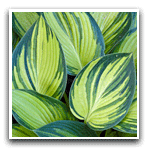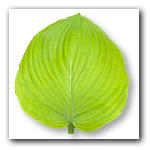 New
hostas come about as the result of asexual changes
in the genetics of a plant called sports or through
sexual reproduction (seeds) involving human
manipulation (hyrbridizing) or through random
action of
bees in the garden. Either way, the resulting plants
share the DNA and physical traits of the parent
plants which can be of interest to
Hostaphiles.
These plants are the ancestors or "Background" hostas for each
cultivar.
New
hostas come about as the result of asexual changes
in the genetics of a plant called sports or through
sexual reproduction (seeds) involving human
manipulation (hyrbridizing) or through random
action of
bees in the garden. Either way, the resulting plants
share the DNA and physical traits of the parent
plants which can be of interest to
Hostaphiles.
These plants are the ancestors or "Background" hostas for each
cultivar.
 Listed
on these index pages are the over 15,000 hosta
names
in the
Hosta Helper Database. For each of the names, we
have tried to gather information on 10 categories
related to a particular cultivar or species. These
include its use as a pod parent, pollen parent or
sport parent. The genetic background of the plant is
included where known. Plants that are considered the
"Same As" or are similar looking or which have
similar sounding names have been added. Siblings
which came from the same hybridizing cross or from a
single batch of tissue culture sports are noted.
Listed
on these index pages are the over 15,000 hosta
names
in the
Hosta Helper Database. For each of the names, we
have tried to gather information on 10 categories
related to a particular cultivar or species. These
include its use as a pod parent, pollen parent or
sport parent. The genetic background of the plant is
included where known. Plants that are considered the
"Same As" or are similar looking or which have
similar sounding names have been added. Siblings
which came from the same hybridizing cross or from a
single batch of tissue culture sports are noted.
Also included may be
certain "type" plants. For instance, many hostas are said to be
Tardiana-like or a
H. 'Sieboldiana' -type although their precise
genetic background is not known.
[Site Map]